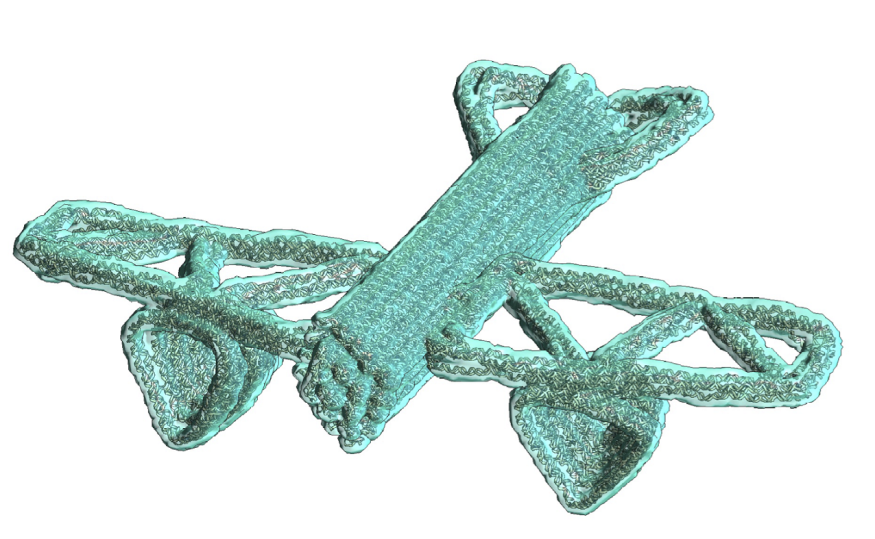DNA-based robots will soon come to life and provide medicine in our bodies, spot the existence of pathogens in our bodies, and assist in making complex, tiny electronics.
In the paper entitled "Integrated computer-aided engineering and design for DNA assemblies" and published in the Nature Materials journal, researchers developed a new tool that can design these multifaceted DNA robots and nanodevices in mere minutes instead of days.
Software Enables Nanostructures Using DNA Strands
These scientists from the Ohio State University introduced their new software tool called MagicDNA (Multi-component Assembly in a Graphical Interface guided by Computation for DNA origami), which helps in designing methods to take tiny DNA strands and coalesce them into complex structures or devices having parts such as rotors and hinges that can execute diverse tasks. And this includes the delivery of needed drugs in our body.
To use MagicDNA, one has to install MATLAB, a proprietary multi-paradigm programming language, and numeric computer environment, the tools site GitHub said.
Researchers have been developing these DNA-based tools for years but with slower utilities and wearisome manual tasks.
But now, they could create these complex structures in just a fraction of time they had taken on the work previously, as a Phys.Org report reported.
Complex DNA Robots, Nanodevices Under Our Control
With MagicDNA, these scientists said they could create devices with six individual components at most, and link them with hinges and joints and do complex motions. And using the software, it would be easier to make robots or devices with more than 20 components that are flexible and versatile. This development, they said, is an immense step in having the power to design nanodevices that would perform more complex actions under our control.

MagicDNA has a plethora of benefits that will assist scientists in designing better and useful nanodevices, with researchers seeking to cut the time before it can be used in our everyday lives.
Another distinct advantage is that MagicDNA lets researchers complete designs in 3-D. Previous tools only featured 2-D creation, making researchers map out their designs into 3-D. As such, the researchers could not make devices too complex.
"Bottom Up" and "Top Down" Designs of Nanostructures
MagicDNA also has the ability to help in designing DNA structures "top down" or "bottom up" as reported in Nano Werk.
In the "bottom up" creation, researchers would get individual DNA strands and mold them into structures they want, allowing their full control of the local device structure and properties.
As for the "top down" approach, researchers can choose how their device is to be formed geometrically and automate how the strands of DNA are combined.
Coalescing the strands would allow the rising complexity of the device geometry while having complete and precise control over the specific component properties.
Another important element of MagicDNA is that it lets researchers simulate how the DNA devices would operate and move to do their tasks. This is because of the complex structure of the devices, it would be hard to forecast what they would do or look like in the real world. As such, simulating how the devices would behave or operate is critical, the researchers note.
Robot Arms, Nanoplanes
In demonstrating MagicDNA's abilities, researchers made and characterized a number of nanostructures the software designed. These devices included robot arms with claws that could pick up tiny items and a nanometer-sized airplane-like structure, which is a thousand times smaller than the width of the human hair.
These abilities of making nanodevices show that they can create more helpful things and execute multiple tasks using one device, the researchers further said.
A DNA robot, for example, could detect a specific pathogen after injection to the bloodstream. However, a complex device could not only spot something terrible is happening, they said, they can also act on it, like administering a drug or catch the pathogen. They said they want to design robots that respond in a certain way to a stimulus or make necessary movements in a particular manner.
They expect that in the next few years, universities and research labs will use MagicDNA, with its use to expand in the near future, such as practical commercial applications for DNA nanodevices.
Check out more news and information on Nanotechnology on Science Times.










